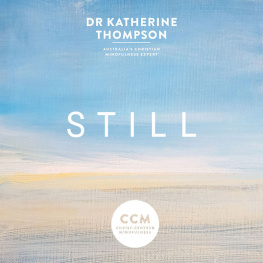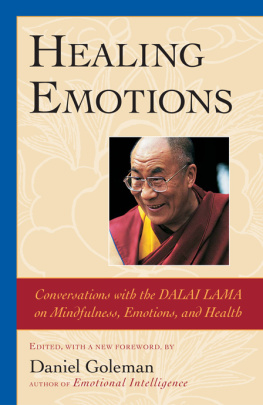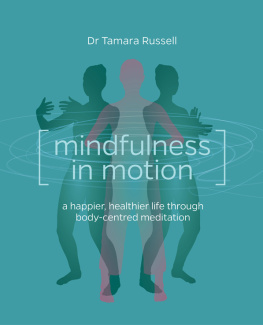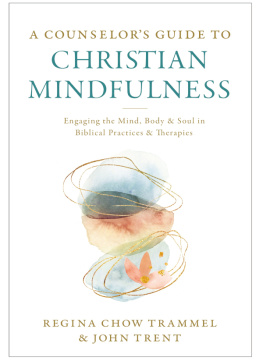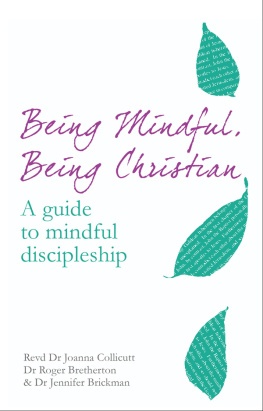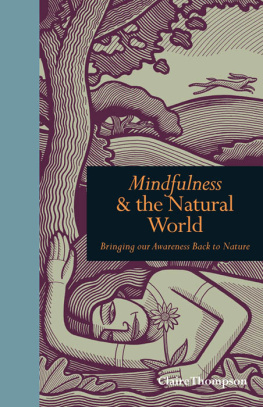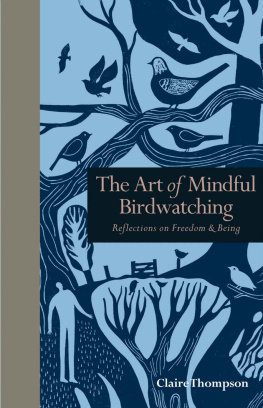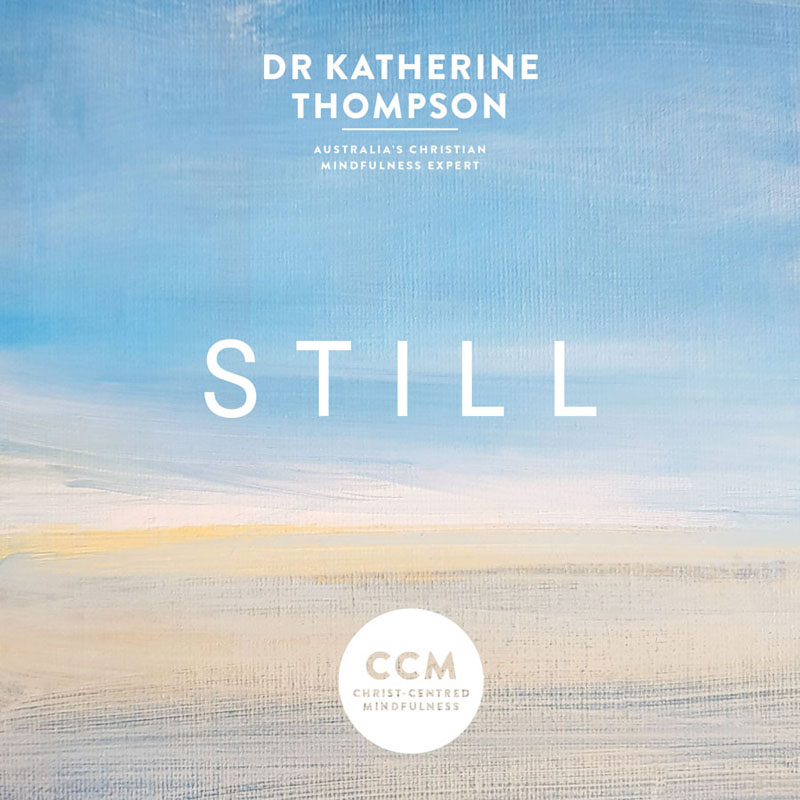

Katherine Thompsons call for Christ-centred mindfulness leads us to the place of contemplation where we can find ourselves and God. Quiet and meditative hearts seem rare these days. Our age is geared to speed and sound, but God cannot be easily seen or heard amid the noise and restlessness. The quest for inner peace seems both critical and difficult, and we need mindful silence to touch our souls. Quiet wisdom is what humanity desperately needs.
Tim Costello
Executive Director, Micah
Published by Acorn Press, an imprint of Bible Society Australia.
ACN 127 775 973
GPO Box 4161
Sydney NSW 2001
Australia
www.acornpress.net.au
Katherine Thompson, 2022. All rights reserved.
ISBN 9780647531396 (print); 9780647531402 (ebook)
Apart from any fair dealing for the purposes of private study, research, criticism or review, no part of this work may be reproduced by electronic or other means without the permission of the publisher.
Katherine Thompson asserts her right under section 193 of the Copyright Act 1968 (Cth) to be identified as the author of this work.
Scripture quotations are taken from the Holy Bible, New International Version Anglicised, NIV Copyright 1979, 1984, 2011 by Biblica, Inc. Used by permission. All rights reserved worldwide.

Editor: Kristin Argall
Cover and text design: Joy Lankshear
Contents

Christ-centred mindfulness is a discipline that uses our five senses and the part of our mind that quietly observes our internal world and environment to focus on one thing. When we do this, our thoughts or rational self continually interrupt us. The challenge is to notice these interruptions and each time return to just observing. It takes persistence and perseverance. The exercises in this book are based on this discipline.
Introduction
Christ-centred mindfulness offers an alternative to popular mindfulness. It teaches us to live in the present moment with a continual connection to God and an awareness of our inner world. It is a pathway to peace, transformation and a deeper relationship with God, and it borrows heavily from the Christian contemplative tradition. This book also incorporates practices used in Acceptance and Commitment Therapy. At its core, mindfulness encourages us to stop, disconnect from distractions and busyness, and be still.
The attitude we bring to this practice is important. We need to put our thoughts and judgements aside and be open to our experience with curiosity and acceptance. Jesus said, Let the little children come to me, and do not hinder them, for the kingdom of heaven belongs to such as these (Matthew 19:14). And it is this childlike attitude that can help us approach the discomfort of our inner world, learn to accept it and trust God to hold us despite it. We can then use the observing, or quiet part, of our mind to notice our emotions and bring them to God.
The challenge that confronts us in practising the discipline of being still is to trust that God, who can command the sea and the waves, can also still the raging emotions inside us and bring peace through his Spirit. We can learn to sit with emotional distress and not be swallowed up by it, because God is with us. We can choose to receive and embrace Gods gift of peace, which he promises to us.
The Christ-centred mindfulness exercises in this book are designed to teach you skills that help you be still and sit with your emotions in Gods presence, and in doing so, experience his peace.

When I was a young child, we used to visit a beautiful beach in Tasmania, where the sand was white and the sea a brilliant turquoise blue. On a sunny day, the place was magical. You could play for hours in the rock pools, poking your finger into the sea anemones so they closed up and tickled your fingertip, or you could dance in the small waves as they crashed onto the sand.
It was a different story when the weather turned and the sky became an angry, dark grey. The full force of Bass Straits swell pummelled the beach, and waves curled in on themselves and threatened to suck everything under. Not deterred from swimming in this weather, we learned a healthy fear and respect for the power of the ocean.
Many a time we were dumped by these waves. Their sheer power knocked us over and sucked us under the water. We then had to wait for the waves to let us go, so that we could return to the safety of the surface and breathe again.
Our emotions can be like the moods of the waves at the beach. Sometimes we enjoy them, but at other times we can feel held under by their power and wonder when we will be able to breathe again. We feel overwhelmed, fearful and without control.
Just like waves, our emotions can hit us with a ferocity we were not expecting, leaving us fearful and at their mercy. This can be distressing, and the experience can knock us off our feet. It can take time to pick ourselves up again. Sometimes our experiences can be so scary and uncomfortable that we decide the sea and water are just not for us. We can either shut our emotions down and disconnect from them, or we can surrender control to them so that our lives become driven by our chaotic moods.
What if there was another way? What if we could learn to surf and ride the waves instead?
Emotional waves
Waves of emotions vary in intensity and size and shape. If we are honest, we prefer the nice ones that make us feel good like happiness, joy and peace.
We are not so comfortable with the difficult emotions like jealousy, stress, anger and fear. We tend to push them aside, ignore them or distract ourselves from them. Sometimes we feed them, making them larger and more painful than they need to be. Whether we avoid, distract ourselves from or feed these negative emotions, the same thing happens: we might feel better for a moment or two, but then we end up feeling worse than ever. Feeling constantly happy is not a realistic goal in life.
It is more realistic to accept that all emotions are part of our humanity. It is not their presence that is the problem, but rather how we relate to them and behave in response to them.
Very rarely do we ever stop to notice our emotions and how they feel in our body. Yet being still, and noticing and accepting them, is the pathway to peace.


Stop
Just as we can sit at the beach watching the beauty and power of the sea, we can also watch our emotions as they pass like waves.
Some waves come rapidly, like anger. They are intense, and they peak and subside quickly. Others tend to just roll along in the background, like boredom. Often we will experience more than one wave at the same time because emotions are complex.
Next page
